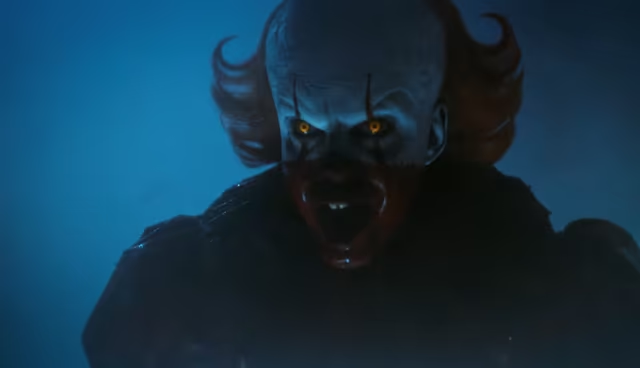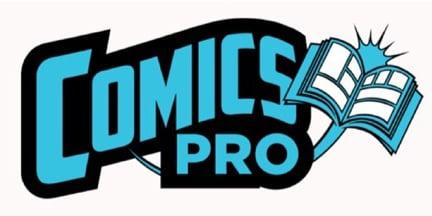If you click on a link and make a purchase we may receive a small commission. Read our editorial policy.
Jurassic Park is about the hardships of working in academia, and it treats both scientists and nature with respect
Not to be an old man romanticizing the past, but the first Jurassic Park film captured why we need to listen to scientists now more than ever

Popverse's top stories
- Wizards of the Coast has a secret rule for MTG against wizards in pointy hats
- “Acting is a contact sport”: Actor/director Bryce Dallas Howard on stunts, safety, and chasing adrenaline
- 2026 is the year of 'Avengers: Really Bad Thing' in comics AND movies as Marvel’s flagship team gets a new focus
I'm obsessed with knowing a lot about things that could kill me. No, I'm not one of those freaks who loves Ted Bundy or Jeffrey Dahmer or whomever. I mean animals. Whether they're extinct dinosaurs that lived millions of years ago, or a mountain lion living just a few miles from my home in Los Angeles, I'm genuinely thrilled by how life on Earth has evolved from single-celled organisms into beings that remind me of my own mortality. If you talk to me long enough, you'll probably hear me drop in a wildlife fact or two, because I can't help myself (rattlesnake mothers go without food for two years during their pregnancies, subsisting only on water absorbed through their skin until they give birth to live young).
But as much as I love grizzly bears and all the other top dogs on our planet, there's a boundary between animals and me that I think is important to uphold. Nature, after all, doesn't give a damn about who I am or what I think about it. And this all can be traced back to the first Jurassic Park film from 1993.
Steven Spielberg's Jurassic Park film depicted the tension between science and capitalism

Jurassic Park made me fall in love with the natural world through science, and it went to great lengths to capture the contemporary era of paleontology through its scientist characters. Steven Spielberg's adaptation of Michael Crichton's novel was pure science fiction, where science wasn't just a creative license to show giant monsters, but an evolving area staffed by passionate professionals and academics whose work clashed with the interests of capitalists. In other words, the first Jurassic Park film wanted the audience to understand scientific principles and practices and why they're important, just as much as it wanted to entertain. Because at the heart of Jurassic Park is a cautionary fact: nature bites back. And good golly, in our year of the Lorde 2025, we need to heed Jurassic Park's demands if we're interested in avoiding our own annihilation.
As humans, we'd benefit from having a few more pop culture scientists running around to remind ourselves of how fragile we are. We're pathetic compared to our great ape cousins, who can easily out-run, out-climb, and out-everything us. Dolphins and orcas have these wonderful, massive brains that make ours look pedestrian. And yet, despite it all, we're arrogant towards the natural world, and we look rather foolish for it. This is an idea that's at the heart of Spielberg's Jurassic Park, a theme he establishes early on while introducing the hero of the story, Sam Neill's Dr. Alan Grant.
While guiding a group of tourists through a dig site in Badlands National Park, Dr. Grant analyzes an image of a Velociraptor skeleton (created through state-of-the-art ground penetrating radar), pointing out the similarities that raptors have with modern-day birds. His audience guffaws at this, and a child at the back of the group chimes in with, "That doesn't look very scary! More like a... six-foot turkey." Dr. Grant strolls up to this child, telling him, in detail, how a pack of Velociraptors would disembowel him with their six-inch retractable claws. "The point is, you are alive when they start to eat you," Dr. Grant says, "So you know, try to show a little respect." The kid solemnly nods. Lesson learned.
Jurassic Park shows us how nature bites back

Right away, Jurassic Park puts us in our place, while simultaneously making paleontologists look incredibly rad. But it doesn't stop there. Minutes later, Dr. Grant and Laura Dern's Dr. Ellie Sattler head back to their cramped RV where John Hammond, the man whose generous financial grants have funded Dr. Grant and Dr. Sattler's research, rummages through their fridge. Before they can chew him out for flying a helicopter through their dig site, Hammond has an offer that's too good to be true. If they agree to fly out to his new "park" in Costa Rica and give their "outside opinion" of it, he'll fund their dig "for a further three years." Sattler and Grant are too bewildered to turn him down.
And this is the kind of bind that scientists and academics are in all the time. Unless you've got an endless supply of money, your research has to be funded from somewhere. It's why, not surprisingly, scientific advancements are often made during times of war, when governments are willing to foot the bill. To work in academia is to run on a nonstop hamster wheel of research and applications for funding, and this attention towards the challenges faced by paleontologists puts the entire plot of Jurassic Park in motion: Dr. Grant and Dr. Sattler aren't fools for showing up to Hammond's park. They're there to secure the future of their research.
The Jurassic World films have lacked the social commentary bite of the original Jurassic Park film

I could go on and on, breaking down how each scene in Spielberg's Jurassic Park hammers these themes home, but I also need to address the elephant in the room: the fact that there's a new Jurassic World film coming out this summer. But as we get further and further away on our silly little timeline from Spielberg's 1993 film, I worry that we didn't listen closely enough the first time around.
Frankly, the Jurassic World franchise has failed to live up to the politics and themes of the original film. The first Jurassic World film quickly tossed aside any interest in providing an updated look at the field of paleontology, which has recently entered a "golden age" thanks to young people who grew up with Jurassic Park. Instead, Jurassic World doubled down on taking an outlandish approach to these animals - the models they use are increasingly inaccurate, as paleontologist David Hone can tell you. The creative liberties taken in the Jurassic World films have been defended given that the "dinosaurs" there have hybrid frog DNA. Okay, sure. But I think it's objectively bad if a film forces us to watch people scream at dinosaurs instead of letting us listen to the experts as they drop really cool information about the behaviors we're observing. Little does Universal know that I would immediately shell out $30 to go to an IMAX screening of a Jurassic World movie if it featured anatomically correct, feathered dinosaurs, smugly grateful for being born at a time when I could see photorealistic dinos without putting myself in mortal danger. They're freaking dinosaurs, you don't need to make them Frankenstein's Monsters in order to be interesting.
So, what would a Jurassic World film made in the spirit of the first Jurassic Park film look like today? Aside from at least one use of the Spielberg Face and absolutely zero instances where a human being extends their hand towards a dinosaur like it's a dog they're telling to "stay," a thoughtful Jurassic World film might touch on issues impacting the field of paleontology today. For instance, amber, that precious resource at the heart of Jurassic Park and Jurassic World, has extremely fraught applications today in paleontology. There is a rich collection of amber-containing specimens dating back to the Cretaceous period that has been mined in a northern region of Myanmar called Kachin. The amber mining industry there is worth a billion dollars - and comes at the price of human rights. The local Kachin Independence Army has been embroiled in a conflict with Myanmar's military for decades now, so much so that the United Nations has determined that Myanmar's military is guilty of human rights violations and genocide. Paleobiologists and museums around the world have made efforts to no longer use or handle amber from Myanmar, and its mining and usage will likely continue to be a contentious issue in the near future for scientists everywhere. There's a human cost to paleontology, and it's about time Jurassic World owned up to this fact.
I don't need my Jurassic Park and Jurassic World films to be documentaries - I have Werner Herzog for that - but I think there's a tremendous sense of urgency to tell blockbuster stories about the power of science and scientists today. After all, if John Hammond had just heeded the cautionary words of Dr. Grant, Sattler, and Malcolm at their little dinner party, then maybe his grandchildren wouldn't have gotten terrorized across the island park he had created. I think what all of us can take away from this is that sometimes, the people who spend years of their lives and thousands of their own dollars to study things that would be difficult to explain at a dinner party know a thing or two about their area of expertise.
And those "direwolves" that have purportedly been "brought back" are nothing more than cosmetically-altered gray wolves, by the way.
Want to know what's coming up next in pop culture? Check out Popverse's guides to:
Follow Popverse for upcoming event coverage and news
Find out how we conduct our review by reading our review policy
Let Popverse be your tour guide through the wilderness of pop culture
Sign in and let us help you find your new favorite thing.
















Comments
Want to join the discussion? Please activate your account first.
Visit Reedpop ID if you need to resend the confirmation email.